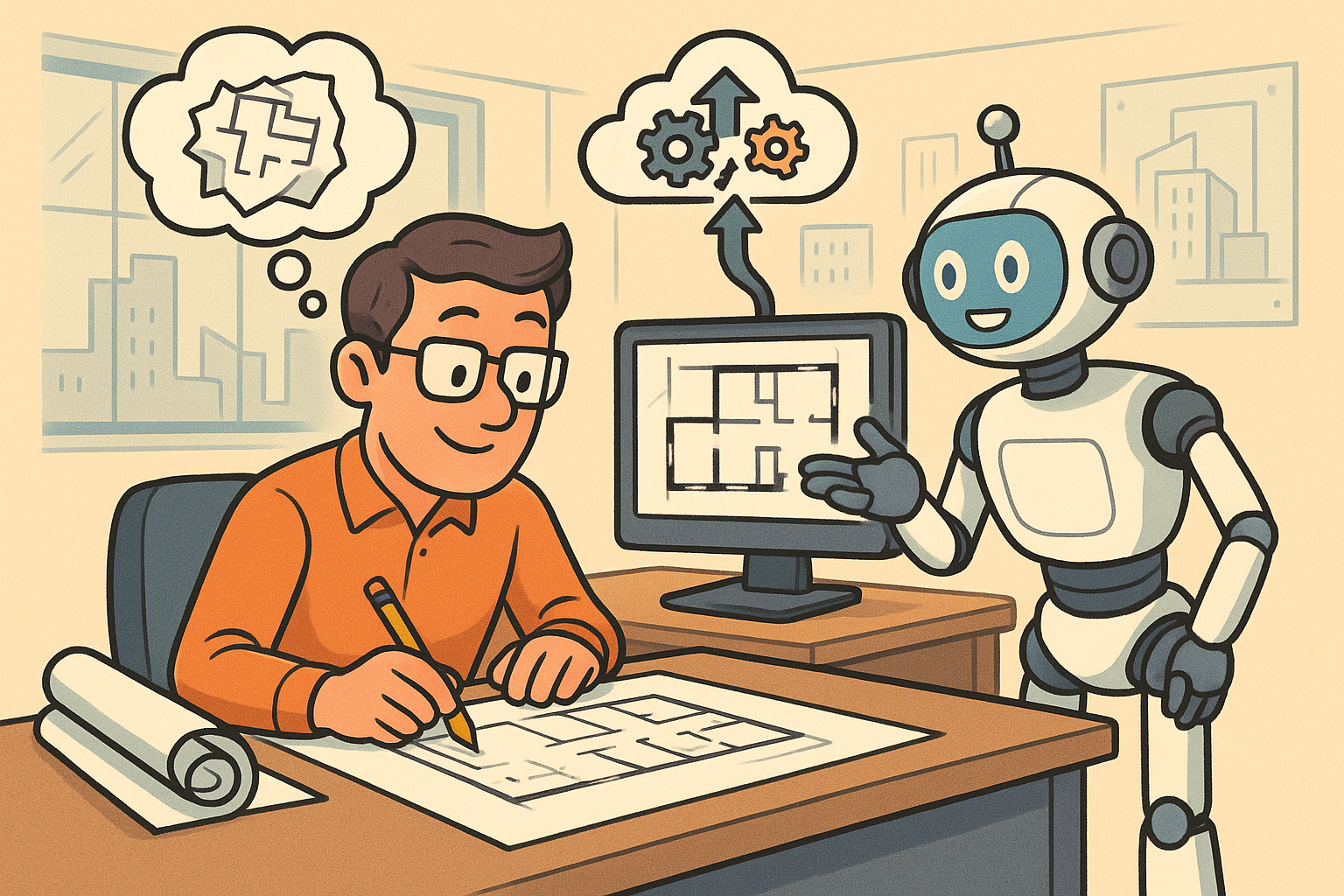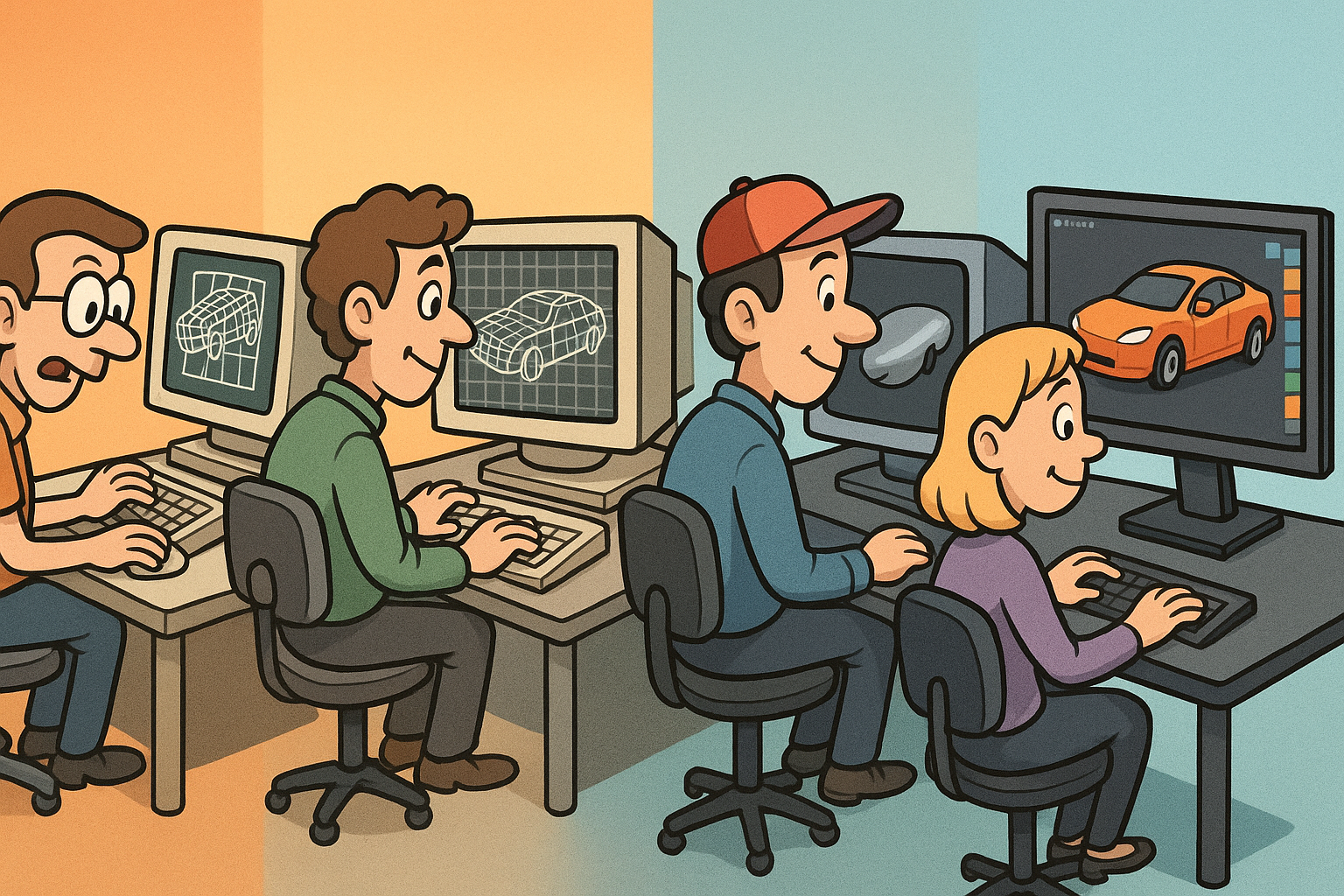Your Cart is Empty
Customer Testimonials
-
"Great customer service. The folks at Novedge were super helpful in navigating a somewhat complicated order including software upgrades and serial numbers in various stages of inactivity. They were friendly and helpful throughout the process.."
Ruben Ruckmark
"Quick & very helpful. We have been using Novedge for years and are very happy with their quick service when we need to make a purchase and excellent support resolving any issues."
Will Woodson
"Scott is the best. He reminds me about subscriptions dates, guides me in the correct direction for updates. He always responds promptly to me. He is literally the reason I continue to work with Novedge and will do so in the future."
Edward Mchugh
"Calvin Lok is “the man”. After my purchase of Sketchup 2021, he called me and provided step-by-step instructions to ease me through difficulties I was having with the setup of my new software."
Mike Borzage
Transformative Impact of Automated Documentation in Architectural Design
October 06, 2025 9 min read


Introduction and Context
The evolution of architectural design over the past decades has been significantly influenced by the rise of digital technology, and one of the most transformative innovations is automated documentation generation. This approach is changing the industry by integrating streamlined processes with an emphasis on reducing manual effort and increasing accuracy. With the application of advanced software tools, architects and engineers are now able to generate documentation through intelligent algorithms that utilize digital workflows in real-time. The integration of automated processes has led to a reduction in the time and labor required to prepare detailed construction documents, ensuring that project delivery is not only faster but also more error-free. In this context, professionals are increasingly leaning on technology to meet the demands of rapid project turnaround while maintaining consistency and quality in their work. This technological shift is driven by several key forces, including the relentless pursuit of operational efficiency, better integration of design and documentation, and the need for error elimination in repetitive tasks.
Overview of Automated Documentation Generation
Automated documentation generation in architectural software is an innovative solution that leverages data-rich environments, cutting-edge algorithms, and robust software architectures. The core idea is to combine the immutable precision of digital data with intelligent recognition systems and real-time processing. Several elements contribute to this process:
- Reducing manual work: As repetitive drafting tasks are automated, teams are free to concentrate on creative and higher-level design challenges;
- Increasing accuracy: By minimizing human error, the likelihood of design discrepancies or construction misinterpretations is significantly lowered;
- Streamlining project delivery: Automated workflows improve coordination between teams, ensure that documentation is updated in real-time, and reduce the lag between design changes and documentation updates.
Evolving Role of Digital Workflows in Modern Architecture
Digital workflows have shifted from being a supplementary tool to a central pillar in the execution of complex projects. This evolution is characterized by the amalgamation of various technologies—ranging from computer-aided design (CAD) to building information modeling (BIM) and beyond—which serve to eliminate redundancies and encourage a cohesive development environment. In the architectural sphere, the implementation of automated documentation not only reduces inconsistencies but also supports project management through the incorporation of digital protocols. This integration is invaluable, as it ensures that any modification in the design phase is instantaneously reflected in the associated documentation. Moreover, the capacity to execute large-scale revisions automatically has fundamentally decreased the time required to update documentation, thereby fostering a work culture built on precision, efficiency, and reliability. The adoption of these technologies has resulted in substantial time savings and established a framework within which creative processes can thrive without the burden of mechanical tasks. Professional teams now have the liberty to innovate further and produce results that are simultaneously precise, highly detailed, and aligned with real-world construction standards.
Technological Foundations
At the heart of the automated documentation trend are the underlying technological foundations that propel these systems into becoming indispensable tools in modern architectural practice. The transformative power of these technologies comes from a blend of robust programming techniques and the innovative integration of legacy design data. Systems today are built upon essential algorithms and data structures that drive the processing of high-density design information. Notable between these are the capabilities to parse and analyze BIM data, identify smart objects within design models, and use machine-led routines such as scripting and machine learning to dynamically update design documentation. By leveraging these technological tools, software platforms are capable of managing vast amounts of information, synthesizing intricate details, and delivering highly accurate representations of the intended design. This multi-layered approach empowers design professionals to maintain consistency across various project stages, reducing the risk of miscommunication and error. With the growing integration of digital tools in architecture, these technological advancements serve not just as enablers but as core drivers of innovation within the ecosystem.
Essential Algorithms and Data Structures Behind Automation
At the core of automated documentation, the algorithms responsible for data parsing and model recognition are crucial. These are typically built on time-tested data structures that allow the efficient storage and retrieval of design components. Common structures employed include trees and graph networks that map the interconnected elements of a design. Moreover, sorting algorithms and search routines are implemented to ensure that every object is correctly recognized and catalogued. The result is a seamless flow where changes in the design environment are captured in real-time, thereby triggering updates in the associated documentation. The reliability of these algorithms depends on their ability to process large sets of data rapidly and accurately. Furthermore, custom algorithms specifically developed within design software environments often include error-correction functions, integrity checks, and constraints that mirror physical construction realities. By aligning algorithmic precision with real-world project needs, modern architectural software ensures that the dynamic interplay between design data and digital documentation remains robust under various operational challenges.
Integration of BIM Data and Smart Object Recognition
Integration with BIM data acts as another cornerstone in the automation of architectural documentation. Modern systems harness BIM’s detailed modeling information to identify and interpret key building elements. These systems use smart object recognition techniques to differentiate between a wide variety of design components automatically. This process involves the identification of standardized elements such as walls, windows, and doors and enables the generation of tailored documentation for each object. The integration is achieved by parsing the BIM model—often using spatial algorithms—and using that information to annotate, classify, and assemble the documentation systematically. Such a process not only increases the overall accuracy of the documentation but also assures compliance with industry standards and building codes. This symbiotic relationship between BIM data extraction and smart recognition ensures that every change in a digital model is accurately mirrored in the project’s ancillary documents. Industries benefit from improved visualizations, efficient reporting, and enhanced collaboration through these automated workflows that bridge the gap between digital models and real-world construction.
Scripting, AI, and Machine Learning in Enhancing Documentation Accuracy
The final technical pillar supporting automated architectural documentation is the increasing use of machine learning and AI technologies. These advances enable software to go beyond simple data manipulation, allowing for predictive adjustments and the identification of potential errors before they become critical. Scripting is heavily utilized to customize and fine-tune the automation process, empowering users to adapt the software to the specific requirements of their projects. The integration of these intelligent features is particularly significant because it enhances the resolution of ambiguities and orchestrates a more natural convergence between creative design and technical rigour. Techniques such as neural networks, pattern recognition, and heuristic computations are routinely applied to ensure that every documentation artifact is derived from the most current and precise design data available. By continuously evolving through feedback loops and learning algorithms, these systems remain at the forefront of innovation—ensuring that as design complexities grow, the corresponding documentation remains unerringly consistent and comprehensive.
Implementation and Workflow Integration
Integrating automated documentation tools into conventional design workflows is a process that necessitates careful planning and execution. It involves rethinking traditional workflows and embracing a more connected and data-driven approach to architectural design and project management. The deployment of these systems has been a gradual but profound shift, marked by the need to accommodate compatibility challenges, refine data standardization practices, and provide comprehensive training to team members. Successful integration requires not only a technical overhaul but also the redesign of internal processes to support a unified digital culture. The advantages that come along with this transformation include improved efficiency, fewer errors, and a dramatic reduction in the time spent on repetitive tasks. Although the transition may present several hurdles, the long-term benefits are overwhelmingly positive, leading to robust, streamlined, and forward-thinking design processes.
Best Practices for Integrating Automated Documentation Tools
Adoption of automated documentation within existing design environments demands a careful balance between leveraging new technologies and preserving established workflows. Best practices suggest beginning with a pilot implementation focused on specific project segments before a full-scale rollout. Key strategies include:
- Comprehensive training sessions for teams to bridge the gap between traditional drafting practices and digital automation;
- Iterative testing and refinement of the automated tools to evaluate their impact under real-world conditions;
- Strong backup systems to handle data during the transition phase, ensuring that any migration or integration issues are swiftly resolved.
Overcoming Challenges and Navigating Compatibility Issues
While the integration of automated documentation systems promises significant advantages, it is not devoid of challenges. Among the foremost concerns are compatibility issues between legacy software and new digital tools, as well as the need for stricter data standardization protocols. These challenges require meticulous planning and the willingness to invest in comprehensive training programs for team members. Key areas where problems may arise include data migration, model interpretation errors, and synchronization of real-time changes across collaborative platforms. To mitigate such difficulties, organizations have been encouraged to establish cross-disciplinary teams that include IT experts, designers, and project managers, ensuring that all potential challenges are identified and addressed well before they hinder project progression. Managing multiple software platforms requires not only a detailed understanding of each tool’s capabilities but also a commitment to continuous professional development. By designing phased implementation plans and leveraging feedback from initial deployments, teams can successfully overcome these compatibility issues while ensuring that the new automated processes are fully optimized for the demands of modern architectural projects. This holistic approach underscores the importance of marrying technical innovation with practical, everyday usability in order to build a resilient workflow that stands the test of time.
Conclusion
The cumulative benefits derived from implementing automated documentation in architectural software are both profound and far-reaching. This transformative approach not only reduces manual work but also enhances the precision of design outputs, thereby streamlining project delivery and mitigating risks associated with human error. The digital shift in architectural documentation represents a pivotal advancement, driven by the need to handle large datasets and generate actionable insights from detailed BIM models. The rapid evolution of related technologies such as machine learning, AI, and sophisticated scripting environments promises to unlock even greater efficiencies in the future. As the industry continues to expand its reliance on these digital tools, the overall workflow evolves into a more cohesive, integrated system where every phase—from design to construction—is interconnected through a single, unified digital backbone.
Recap of the Benefits of Automated Documentation
A detailed analysis of the transformative impact of automated documentation reveals several key advantages. The primary benefits include:
- Significant reduction in manual processes, which allows architects and engineers to focus on creative design;
- Improved data accuracy, as the risk of human error is drastically minimized;
- Streamlined communication and documentation workflows that support faster project delivery;
- Enhanced consistency and compliance with industry standards, thereby facilitating better project outcomes.
Emerging Trends and Final Thoughts on Future Directions
Looking to the future, the domain of automated documentation in architectural software is poised for further evolution as emerging trends continue to influence the landscape. Current innovations such as cloud-based collaboration, augmented reality for enhanced visualization, and real-time analytics are expected to transform the way architectural projects are conceptualized, developed, and delivered. Further integration of machine learning and predictive analytics will likely enable systems to anticipate design changes and proactively adjust documentation—a move that promises to refine project workflows even further. As digital technologies become more deeply entrenched in architectural practices, continual improvement and iterative learning will define the industry's progress. In this emerging paradigm, embracing these transformative tools is not just a competitive advantage but a requisite step towards achieving operational excellence. The confluence of advanced algorithms, robust data integration techniques, and intelligent automation ensures that the field remains dynamic, resilient, and ready to meet future challenges. Ultimately, the proactive adoption of automated documentation represents a strategic investment in a future where design innovation and precision coexist seamlessly, driving transformative change throughout architectural project delivery.
Also in Design News

Design Software History: The Evolution of Design Software: From Early Innovations to the Legacy of Alias Research and Its Impact on Modern Digital Design Tools
October 06, 2025 13 min read
Read More
Cinema 4D Tip: Boost Productivity in Cinema 4D with Essential Keyboard Shortcuts
October 06, 2025 2 min read
Read MoreSubscribe
Sign up to get the latest on sales, new releases and more …



